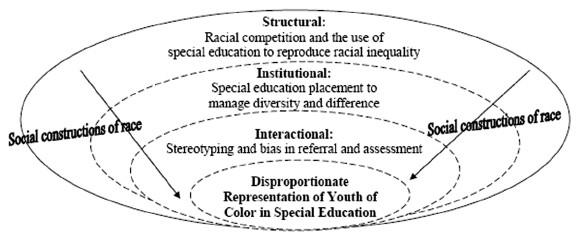Disproportionality in Special Education
29th July 2022

Educating children who have various kinds of special needs can be a challenging job. Needless to say, it is tough for districts, schools, families, and, most significantly, the students themselves. Disproportionality in special education is a major problem that affects both students and teachers.
The term “educational disproportionality” basically refers to when a cultural or ethnic group’s depiction in a particular education category is unequal compared to their complete enrolment. Disproportionality is the over-representation of marginal students recognized with a learning disability or other types of special needs under the Individuals with Disabilities Education Act (IDEA).
Understanding the Disproportionality in Special Education
Under IDEA, a kid may become qualified for special education services when he/she is diagnosed with one of many covered special needs. These include autism, deaf-blindness, emotional disturbance, intellectual special needs, orthopaedic impairment, attention deficit hyperactivity disorder, dyslexia, or traumatic brain wound.
The effects of Disproportionality in Special Education ---
- Disproportionality stops children from reaching their academic potential
- It fuels negative typecasts regarding marginal groups
- Disproportionality results in a kind of ethnic summarizing that places sectional learners at difficulty throughout their school year
- It also prevents schools from identifying the requirement to fine-tune curriculum and teaching approaches to reach a wide-ranging range of instructional requirements of a diverse student body
- Results in lowered opportunities among teachers, parents, and the students themselves
Unfortunately, disproportionality in special education is also a socioeconomic problem.
Major Causes Behind Disproportionality
Studies revealed the following probable causes of disproportionality ---

- Failure to identify and accommodate cultural differences among marginal groups
- Use of unsuitable assessment approaches for English Language Learners and cultural and ethnic components
- Disappointment to accommodate parents of learners with Limited English Expertise or language subgroups
- Lack of receptiveness to cultural as well as socioeconomic transformations among kids and their families
Correcting this disproportionality is challenging.
How Managers Can Aid Address Disproportionality in Special Education?
Improving the retention rates of skilled special education teachers offers direct advantages to school systems to students. You can help by aiding formulate educators with the required skills and resources they need to categorize learners in the necessity of special services.
Professional training with SEN Courses Online will help in improving the situation. The development for recognizing kids for special education programs includes a valuation. If appropriately trained, teachers who witness learners struggling educationally as well as socially can interfere as soon as they distinguish the signs. Professional school administrators can push for access to teachers trained in working with learners with IEP campaigns.

You could increase observations for all students. It will support addressing the requirements of every student. This could embrace numerous features including test scores, subjective observations, and classroom performance. Educational administrators can safeguard that school employees gain important skills for the meeting, evaluating, and understanding data on student performance as well as development.
Professionals need to improve the quality of teaching. Each year, a lot of special education teachers quit. It is important to address the teachers’ burnout due to heavy student workloads, the problem of precisely completing IEP paperwork, and low wages. Skilled special education educators can pair up with new teachers to support steer the differentiated challenges of working with students with special needs.
Additionally, if any kind of educational review reveals disproportionality, directing a root-cause investigation can help regulate the factors leading to disproportionality with an approach for course improvement.
The Bottom Line
Conducting professional development and coaching for leaders and teachers with SEN Courses Online will help in building positive classroom cultures. It is also essential to take a proactive and preventative approach to reduce rates of disproportionality in special education.

